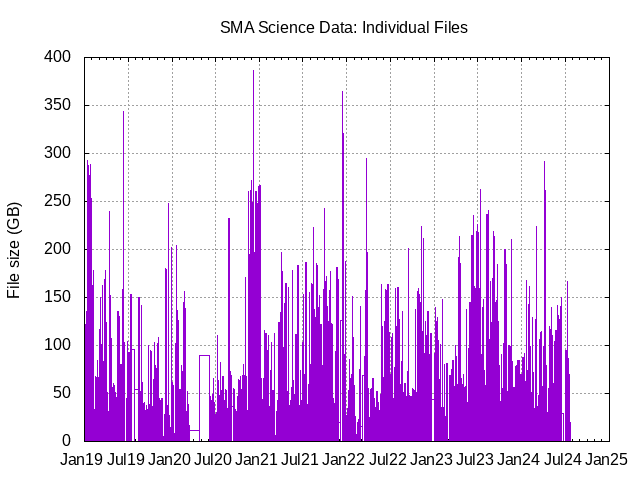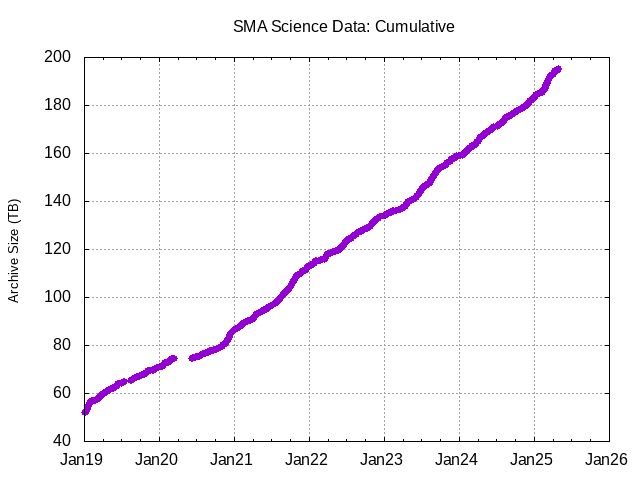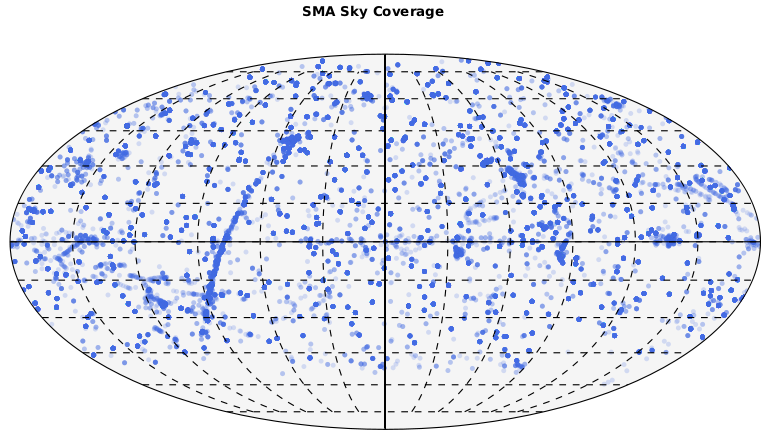Accessing SMA Data
Accessing Raw Data from the RTDC
The RTDC machines have a local copy of all raw SMA science data (2004-present), along with the past couple of year worth of flux and baseline data. If you have an account with the RTDC you can log in to any RTDC machine and access SMA data from the locations listed in the table below.
If you are member of R&G and would like an account, email Holly Thomas and supply your CF username.
| Type | Data Year | Location |
| Science | current year | /sma/data/science/mir_data |
| Science | 20xx | /sma/data/science/mir_data.20xx |
| Flux | From 2014 | /sma/data/flux/mir_data.20xx |
| Baseline | From 2014 | /sma/data/baseline/mir_data.20xx |
To access historical non-science data please visit the SMA machines in Hilo.
• ALL data is subject to the 15 month proprietary period. If you are not a member of the project, please limit your access to non-proprietary data only.
• Prior to May 2007, all non-science data were mixed in with the science data.
• Pointing, flux and baseline data can also be searched/filtered through the Calibration Archive web page. However, the results do not link to the data files.
If you do not know what file to access, you should visit the SMA Data Archive and use the available filters (source name, project code, tuning etc).
Accessing Raw Data from Outside the CfA
All raw SMA data (science, flux, baseline) is available to external users through the SMA Data Archive. Proprietary data is listed but not available to download, except by the PI and authorized users who should go through the Proprietary Archive.
Science data taken with the ASIC correlator have typical raw file sizes of ~10GB. The increase in sizes from 2015 shows the introduction of SWARM chunk by chunk. SWARM reached it's full 4 chunk (8GHz) bandwidth in the second half of 2016. Since then file sizes have been regularly exceeding 100GB. The largest files are those with short scan times such as large maps covering a large number of pointings. Be aware of the size of your data and consider rebinning them using SMARechunker.
** Plots updated daily **
The coverage of all data in the main science archive as of Septmeber 2019. This includes flux and baseline data, but not planets or moons.




